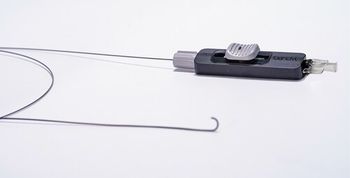
The newest Apple Watch will flag possible hypertension, pending FDA clearance
Key Takeaways
- Apple Watch Series 11 introduces hypertension notifications, pending FDA approval, to identify chronic high blood pressure patterns.
- The watch's optical sensor analyzes blood vessel responses, prompting users to confirm findings with a third-party cuff.
Apple Watch Series 11 introduces notifications for possible chronic high blood pressure. The company projects to catch more than one million previously undiagnosed cases of hypertension within a year of release.
The notification will also arrive on recent devices (Apple Watch Series 9 and later; Apple Watch Ultra 2 and later) with the release of watchOS 26 on September 15.
“
By analyzing long-horizon trends from the optical heart sensor, the
How the alerts will work
- Signal source: The watch uses its optical sensor to analyze how blood vessels respond to each heartbeat. An algorithm reviews 30-day windows for consistent patterns that correlate with chronic hypertension.
- What the user sees: If the pattern is detected, a notification appears on the watch, and paired iPhone, labeled “Possible Hypertension,” accompanied by recommended next steps.
- Next steps (per Apple): Users are then prompted to log blood pressure for seven days with a third-party upper-arm cuff and
share results at their next clinical visit. That advice aligns with contemporary guideline approaches that rely on home or ambulatory monitoring rather than single in-office readings. - Limitations: According to Apple, the feature is not intended for users under the age of 22, during pregnancy or for those already diagnosed with hypertension by a clinician. It will not detect all cases.
Apple expects FDA and other regulatory clearances this month. Until then, U.S. users will not see the feature enabled, though the company plans rollout in more than 150 countries, including the U.S. and EU, once approved.
Apple said its algorithm was trained on data from more than 100,000 participants across multiple studies and validated in a clinical study of more than 2,000 people. Details regarding study design, performance targets (e.g., sensitivity/specificity for persistent hypertension) and subgroup performance will be important for physicians.
Sleep scores join the wrist dashboard
Alongside hypertension notifications, Apple is adding a sleep score that synthesizes duration, bedtime consistency, awakenings and stages into an easily digestible number surfaced on the watch and in the iPhone Health app. The approach is informed by guidance from the American Academy of Sleep Medicine, National Sleep Foundation and World Sleep Society. It was developed and tested using more than five million nights of de-identified sleep data.
If cleared, Apple’s hypertension notifications could nudge more patients toward proper confirmation with home cuff monitoring and earlier treatment — a public-health win if accuracy and follow-through hold up. For practices, the value will hinge on clear instructions, standardized home monitoring and efficient data review. The feature won’t replace the traditional cuff, but it will get more of them into patients’ homes.
Newsletter
Stay informed and empowered with Medical Economics enewsletter, delivering expert insights, financial strategies, practice management tips and technology trends — tailored for today’s physicians.















